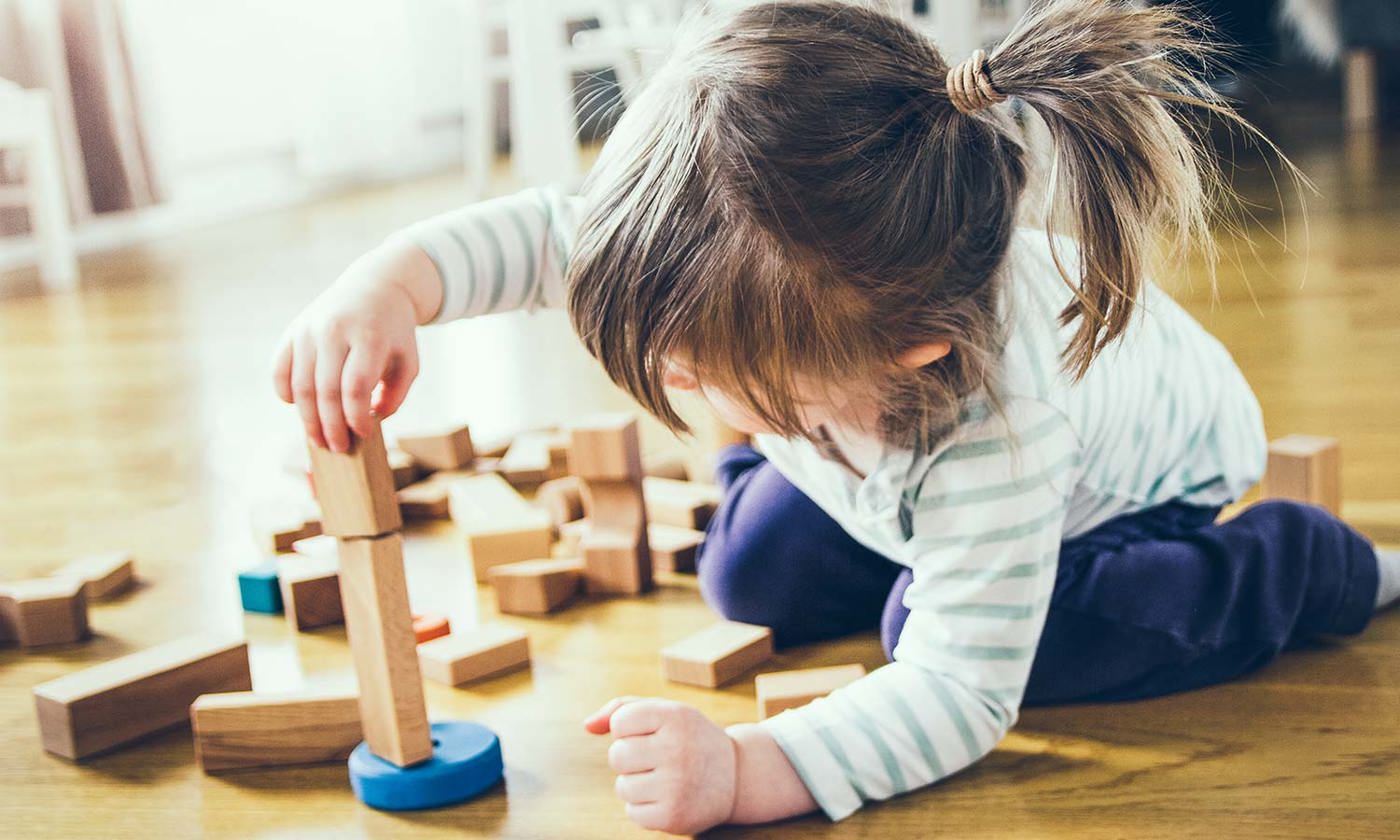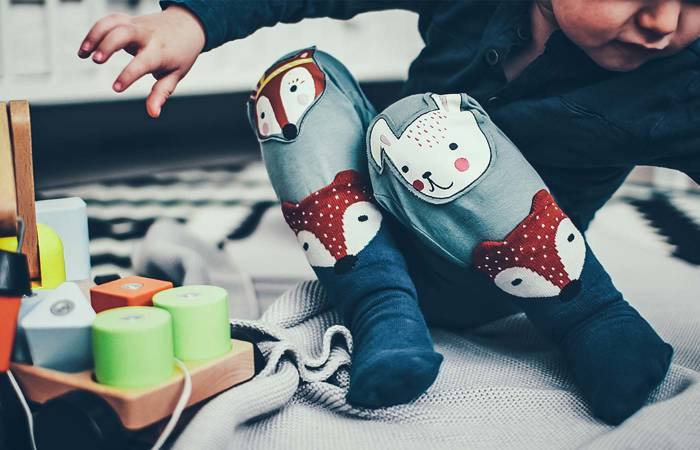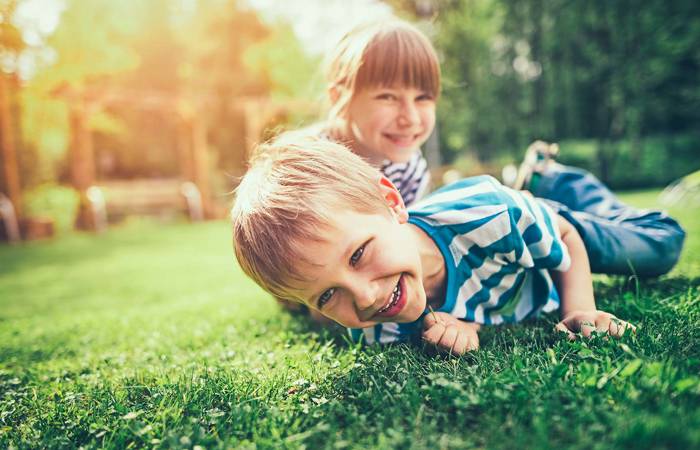Like what you see?
Sign up to receive more free parenting advice.
Thank you for subscribing to our newsletter!
Early Learning

Credit: iStock.com/emeliemaria
For most adults, it’s easy to define ‘toys’ as objects with a distinct form: a car, a doll or a toy train. All are popular. However, if we broaden our definition of an excellent plaything to be far more flexible, we can burst our children’s imaginations wide open.
One of the keys is to use objects known as ‘loose parts’. Loose parts are materials that can be moved, carried, combined, lined up and even taken apart or put back together in multiple ways. These flexible items can be used for anything, and as such make for a very rich play environment for children.
"When we give a child a toy we limit their potential, as it’s so pre-formed. For children a cardboard box has limitless possibilities," says Nicole Sadlier, Physical Activity Project Officer at Bluearth Foundation.
"It can be stacked or altered. It could become a cubby house to hide in, or a home, fire station or truck. You could put windows in it or cut it up into little pieces," Nicole says.
Before we put old bottle lids or containers into the recycling bin they can actually have a whole new life as children’s play objects. We may not think of them as such, but they are simple, cheap, everyday materials that in a child’s eyes offer limitless potential to make it into whatever is in their head.Nicole Sadlier
Stay up to date with the latest news and articles from First Five Years
Thank you for subscribing to our newsletter!
Of course using the items lying around our house rather than heading off to the shops to regularly buy new toys is not a new concept.
"The theory first came forward in the 1970s. It was realised that having an environment with a variety of flexible materials offered loads of potential for creativity,” Nicole says.
As any generation that didn't have access to the disposable income or manufacturing we do today will know, in those environments you have to be more creative. My own parents said they had about three toys each,” Nicole says.
“As today’s parents we [usually] go for toys or specific items for children, but we find they go a lot better with items that can be used for anything,” she says.
Household items like fabric, buckets, crates, boxes, flowerpots, ice cube trays and kitchen items and utensils are all good fodder for loose parts play. But so are objects we’d usually throw away.
“Before we put old bottle lids or containers into the recycling bin they can actually have a whole new life as children’s play objects. We may not think of them as such, but they are simple, cheap, everyday materials that in a child’s eyes offer limitless potential to make it into whatever is in their head,” Nicole says.
Loose parts play is intriguing for most children right through primary school. (Let's face it, even some creative adults still find it enjoyable.)
Over the last few years, schools are catching on – motivated partly by money and partly by an attempt to engage children beyond screens – they are adding loose parts “pods” in their playgrounds.
“Primary schools are finding these pods get children to be more creative and active, as they can manipulate their environment,” Nicole says.
How loose parts play helps our children
The benefits of loose parts go well beyond budgets and reduced screen time.
Experts believe there are both social and educational advantages inherent to the concept.
“At school, children who aren’t athletic won’t engage with a game involving balls. But with loose parts play, because it mixes in creativity, children who are more creatively developed are on an even playing field with children who may be more physically developed,” Nicole says.
There are also important cognitive skills involved.
"Part of it is about design, and part of it is problem-solving. A child might have material that doesn't quite work the way they wanted to so they need to figure out how to change it. They might use tools like scissors, tape or cardboard saws to manipulate those materials, so there is physical development involved as well," Nicole says.
University of Canberra's Dr Cathy Hope is the Coordinator of the Play, Creativity and Wellbeing Project.
The Project explores play as a mode of engagement, as a driver of creativity and innovation, and as a facilitator of individual and community wellbeing.
She agrees there’s been a recent return to all kinds of unstructured play in educational settings.
“Teachers and child care providers are becoming more aware of the benefits of this type of play. As one example, there’s a wonderful after school service in my neighbourhood that is dedicated to loose parts play,” Dr Hope says.
“Every time I visit there, the children are inventing all manner of fantastical things. I have never in my life seen such happy, active, engaged and enlivened kids after a long school day!”
Dr Hope says there are now multiple studies emerging about the negative impact of risk aversion and too much structured play on children and this impact has also become apparent in classrooms.
“This kind of open-ended and unstructured play has certainly been eclipsed in the last few decades by a complex set of cultural factors including the rise of risk aversion and (largely unwarranted) concerns about children’s safety in public spaces, as well as the commoditisation and privatisation of play and the growth of the manufactured toy industry,” she says.
How to start with loose parts
To get started parents can begin by diverting everything destined for the recycling bin.
"Wash it, keep it for a bit and see what your kids do with it," Nicole says.
Although the move to introducing more loose parts play at home is mostly positive (particularly in that it cuts down the need to continually head to the shops and buy the latest, greatest toy your child "needs"), Nicole admits there is one downside.
“Be prepared for mess. You don’t have to give them free range to mess up the whole house, but allow them the creativity and start seeing all that mess is fantastic play. They get so much out of it. And it won’t last forever!”
Where to find your loose parts
- Start by diverting items like containers and lids from your recycling bin. Wash them out and see what the kids change them into.
- Visit your local op shop, or look for unused boxes outside shopping centres: there’s nothing kids like better than a huge, fridge-sized box.
- At the supermarket, choose a box over a bag. If you leave it out on the floor long enough children will use it for something.
- Nature abounds with options for loose parts like sticks, acorns or rocks. Take home a pocketful from your local playground, as soon as you do you’ll start noticing children “mine” the ground for pebbles to take home.
- Seeing the potential in everyday objectives – in some ways, it’s just a shift in perspective.







